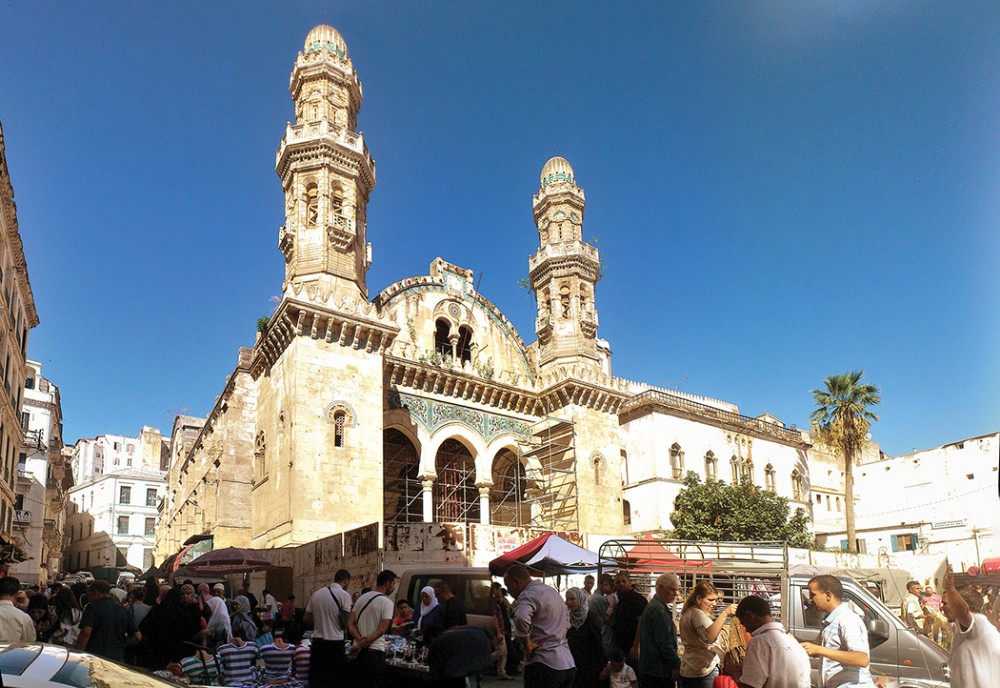The fraught history of Christians in Algeria
What began as a colonial land grab became the ground of martyrdom.

In modern times, two very different buildings have successively served as cathedral churches for the North African city of Algiers. The story of the two structures starts with a vast if flawed Christian aspiration in the region, which was followed by the near-total elimination of a thriving Christian community. It also recalls incidents of modern-day martyrdom.
In 1830, France began the annexation of the lands that we today call Algeria, an ambition that was completed through long and bloody wars. By the 20th century, Algeria was no mere colony; it was an integral part of metropolitan France, making Algiers in some ways as much a French city as Rouen or Marseille. European settlers, mainly Catholics, flooded into the land, so that by the 1950s they made up a million of Algeria’s 11 million people.
Read our latest issue or browse back issues.
If the Algerian venture began as a naked imperial land grab, Catholic thinkers saw it as the foundation for something else: the reconversion of what in Roman times had been Christian North Africa. A bishopric was created in Algiers in 1838, with its seat at St. Philip’s Cathedral. This was established by appropriating a fine Ottoman mosque, dating from 1612. The first archbishop, in 1867, was Cardinal Charles Lavigerie, to whom the pope granted the evocative title of archbishop of Carthage and primate of Africa. Besides promoting extensive missions, Lavigerie dreamed of a modern-day crusading order—a well-armed militia Christi that would wander Africa defending pilgrims and suppressing slave traders.
As late as 1950, the French pursued this vision. Catholic hopes found a glorious symbol in the modernist architectural masterpiece then being built in Algiers as the Church of the Sacred Heart. But between 1954 and 1962, Arab nationalist forces organized a war of liberation, which included a campaign in Algiers itself that provided the blueprint for all subsequent urban guerrilla struggles.
The nationalists triumphed in 1962, creating a new state of Algeria. Within a short time, virtually the whole community of European settlers or colons emigrated en masse, and Algeria’s Christian community evaporated. Today, Christians make up at most a hundred thousand out of a population of 40 million.
Although the nationalists presented themselves as secular and socialist, Islamic sentiment did much to drive anti-French resentment. For many Algerians, the country’s true liberation was symbolized by the seizure of St. Philip’s Cathedral and its rededication as the grand Ketchaoua Mosque. It was at this point that the Catholic diocese moved its seat to the magnificent Sacred Heart church, whose grandeur was out of all proportion to the shrunken community it served. Other cathedrals and churches went out of Christian use (the cathedral at Oran is now a public library). They lost their functions just as thoroughly as had the long-ruined churches of Roman Africa centuries before them.
Europeans and Christians found the new Algeria deeply uncongenial. The sense of danger grew steadily with the rise of Islamist political movements, and political tensions erupted into a civil war in the 1990s. Hundreds of thousands perished as Islamists battled the nationalist government. The few remaining Christians were no longer a political force, but they were an obvious target for armed militias like the GIA, the Armed Islamic Group
In such a setting, a decision to remain in the country seemed rash to the point of insanity. Even so, this was the course taken by some truly remarkable Christians, most famously the members of the Trappist monastic community of the Abbey of Our Lady of Atlas in Tibhirine. Established in 1938, the community had dedicated itself to serving local Muslim villagers. For those locals, the Trappists were familiar quiet neighbors, whose medical services were gratefully received.
But the situation was too perilous to endure. In 1996, seven of the monks were abducted and had their throats cut, almost certainly by the GIA. In an attempt to avoid presenting the incident in terms of simple interreligious hatred, some observers have tried to shift the blame to undercover government forces. That conspiratorial view is almost certainly false.
The martyrdom of the Tibhirine monks is depicted in the 2010 film Of Gods and Men, a superlative production that must be counted among the finest modern works of religious art in any medium. It is a worthy monument, at times so moving as to be difficult to watch. Last year, in a powerful ceremony held in Oran, the Catholic Church beatified the seven monks, together with a dozen other clergy murdered during the civil wars of the 1990s (now ended). Those martyrs, each in their own way, had resolved to stay in a land where to be a Christian was to invite martyrdom.
A version of this article appears in the print edition under the title “Algeria’s remaining Christians.”






